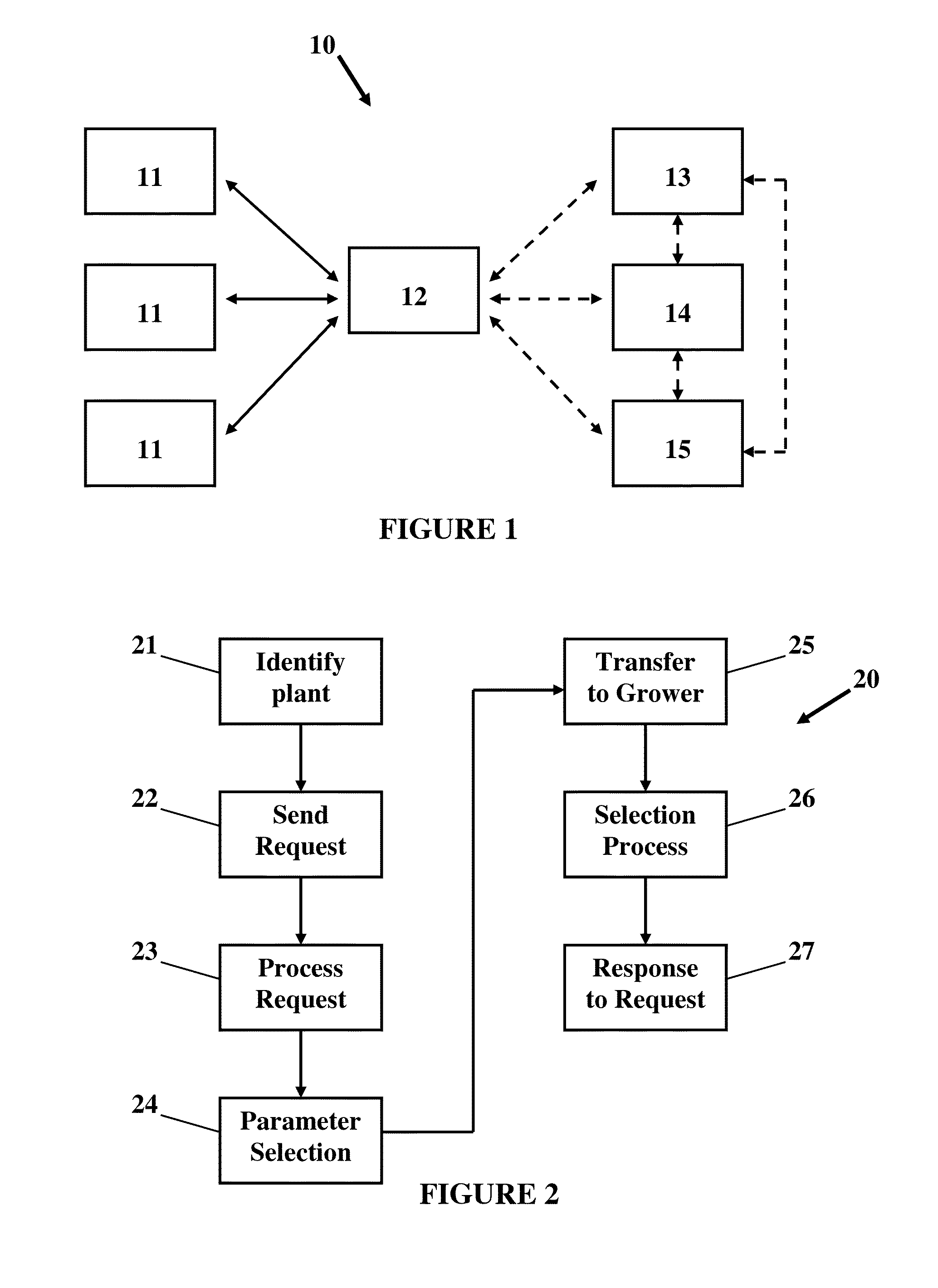Screening methods
a screening method and screening method technology, applied in combinational chemistry, biochemistry apparatus and processes, chemical libraries, etc., can solve the problems of limited scope, limited commercial success, and relatively little research effort directed at the development of plant traits via other means
- Summary
- Abstract
- Description
- Claims
- Application Information
AI Technical Summary
Benefits of technology
Problems solved by technology
Method used
Image
Examples
example 1
Use of a Method of the Invention Combined with Whole Genome Shuffling to Select Corn-Adapted Bacteria Conferring Resistance to the Corn Root Worm
Step 1: Library Acquisition
[0358]Whole genome shuffling can accelerate directed evolution by facilitating recombination between the members of a selected population of microbes. Diverse strains of Bacillus thuringiensis containing Cry3 genes and other cry genes with activity against the corn root worm (CRW) have been found in numerous habitats. Similarly, multiple species and strains of Bacillus, including B. thuringiensis, have been found in endo-, epi- or rhizospheric association with many crop species, including corn. Multiple strains from both of these sources, i.e. both CRW active and corn-root associative are combined to form a single parental library.
Step 2: Recombination of Bacterial Genomes
[0359]Combinatorial libraries of new strains are generated from the parental library by intraspecific fusion and interspecific hybridization by ...
example 2
Use of a Method of the Invention with Directed Molecular Evolution to Select Corn-Adapted Bacteria Conferring Desirable Crop Output Traits
[0368]Directed evolution of single genes or loci through random or directed mutagenesis techniques and other recombinatorial procedures known to those skilled in the art, can be used to create libraries of microbes exhibiting targeted genetic variation. In this example the process outlined in the invention is applied as a series of iterative steps following creation of the library, to generate crop-adapted strains of microbes conferring the desired phenotype. The methodology is as generally described above with the difference being that specific genes or loci associated with a desired phenotype are targeted.
[0369]Recombinant libraries may be used separately or combined with naturally-occurring microbes derived from any material or step in a process of the invention.
example 3
Use of Process to Select Seed-Borne Endophytes Conveying a Beneficial Crop Trait
[0370]Forage grasses expressing beneficial traits such as insect-resistance and improved tolerance to both biotic and abiotic stressors via strains of the seed-borne fungus Neotypodium sp. have been widely adopted by farmers in Zealand and elsewhere. It would be desirable to extend the benefits of traits similar to those expressed by this seed-borne fungus and other similar species in the fungal family, to a broader range of seed-borne endophytic microbes thereby providing access to a much wider range of beneficial crop traits.
[0371]Step 1. Untreated ryegrass seeds are planted in a wide variety of soils in small pots. Soils may include additional amendments comprising pure cultures of microorganisms, mixtures of microorganisms or materials containing microorganisms that derived from other sources, including those outlined in examples 1 and 2 above.
[0372]Step 2. After a suitable period of growth, the plan...
PUM
| Property | Measurement | Unit |
|---|---|---|
| temperature | aaaaa | aaaaa |
| composition | aaaaa | aaaaa |
| physical | aaaaa | aaaaa |
Abstract
Description
Claims
Application Information
 Login to View More
Login to View More - R&D
- Intellectual Property
- Life Sciences
- Materials
- Tech Scout
- Unparalleled Data Quality
- Higher Quality Content
- 60% Fewer Hallucinations
Browse by: Latest US Patents, China's latest patents, Technical Efficacy Thesaurus, Application Domain, Technology Topic, Popular Technical Reports.
© 2025 PatSnap. All rights reserved.Legal|Privacy policy|Modern Slavery Act Transparency Statement|Sitemap|About US| Contact US: help@patsnap.com

